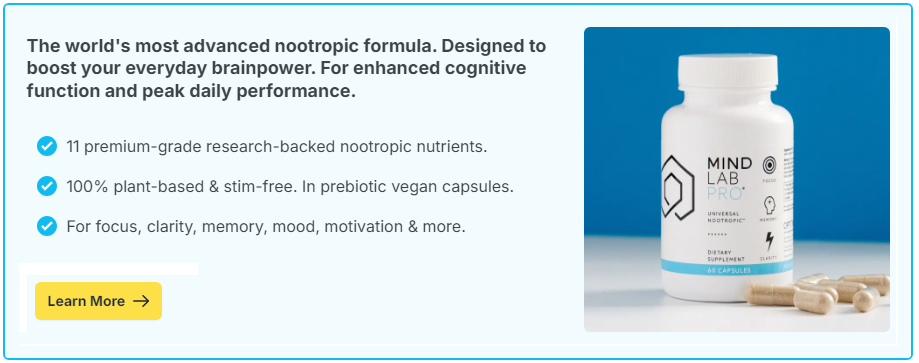
The creative minds of artists and writers have always sought ways to enhance their creativity and concentration. Long before science gave us the term “nootropics,” individuals involved in the arts were turning to various substances to unlock inspiration and keep mental fatigue at bay. In recent years, the buzz around nootropics has surged, yet their roots stretch far back in history.
Contents
The Mysterious World of Nootropics
Nootropics might sound like a modern health trend, but they mere refer to substances that can improve brain performance. These can be natural or synthetic and are known for influencing memory, creativity, motivation, and attention. For artists and writers who rely heavily on their imagination and focus, nootropics present an appealing avenue to potentially boost their work.
History’s Most Famous Creative Minds
Some of history’s most celebrated creative figures are believed to have used nootropic-like substances—even if they weren’t called that yet. Take, for instance, ancient Greek scholars like Aristotle. They relied on natural sources such as wine infused with herbs to stimulate thought and creativity during their philosophical debates.
During the Renaissance, artists and writers turned to coffee, sugar, and other substances as part of their creative rituals. Sugar, which was considered a luxury at the time, was often used by writers as a quick source of energy for the brain. The tradition continued into the 19th and early 20th centuries, with celebrated authors and poets often consuming large amounts of coffee or alcohol to enhance their creativity and stamina.
Unlocking Creative Potential: How Nootropics Work
But why do nootropics hold so much promise for nurturing creativity? To understand this, it’s essential to explore how they might impact the brain.
Enhancing Brain Function
Nootropics work in various ways depending on their type. Some increase blood flow to the brain, while others promote the production of neurotransmitters—the chemicals that transmit signals in the brain. These effects can result in improved mood and mental clarity, which are crucial for anyone engaged in creative activities.
Furthermore, nootropics like caffeine or ginseng are known to increase energy levels, reducing the mental fatigue that can stifle creativity. When brains are tired, they’re less capable of making the connections needed for those ‘eureka’ moments.
Boosting Focus and Motivation
For many artists and writers, maintaining a steady focus is one of the most significant challenges. Nootropics can enhance focus by modulating brain chemicals such as dopamine and serotonin, offering a sense of well-being that keeps minds locked onto the task at hand.
Motivation is another key factor in creative pursuits. Certain nootropics are believed to increase the brain’s natural production of dopamine, a chemical that enhances drive and goal-oriented behavior. This can be immensely helpful for creatives who often work alone and must self-motivate.
Exploring the Natural Nootropics Used by Creatives
Before modern nootropics like modafinil and piracetam became known, creatives turned to more accessible natural sources to fuel their creative souls. Let’s look at some of these age-old substances.
Ginkgo Biloba
Used in traditional Chinese medicine, ginkgo biloba is believed to improve memory and cognitive speed. It’s thought to boost blood circulation in the brain, providing the mental clarity needed for deep creative work.
Rhodiola Rosea
Known as an “adaptogen,” rhodiola helps the body handle stress better. It is said to reduce fatigue and boost the brain’s resistance to stress, which can be particularly beneficial during long creative sessions.
Panax Ginseng
This herb has been revered in various cultures for its invigorating properties. For writers dealing with long hours of work, ginseng might offer the energy boost required to keep thoughts flowing seamlessly.
Modern Times: Nootropics in Today’s Creative Creativity
In our contemporary times, the widespread availability and variety of nootropics have made them more accessible than ever for artists and writers alike.
A Wide Range of Options
Today, nootropics are available in various forms – from supplements to teas and even infused foods. Many creatives still turn to caffeine, not just in coffee but in more controlled supplement forms. L-theanine, often found in green tea, is another popular choice due to its calming effect paired with caffeine’s stimulation, creating a balanced, focused state.
Increasing Social Acceptance
As nootropics become more common, their stigma is slowly fading. Many creatives are open about their use, sharing their experiences through blogs, podcasts, and workshops. This openness has fostered a community where enthusiasts explore and recommend options based on personal needs and creative hurdles.
The use of nootropics by artists and writers is not merely a quest for productivity; it’s a longstanding pursuit of enhancing the mind’s natural ability to create and imagine. As we continue to understand more about the brain, nootropics offer fascinating possibilities in enhancing human potential. Whether you’re an aspiring artist or a seasoned writer, tapping into the ancient wisdom of cognitive enhancers may offer unexplored pathways to unlock your full creative power.

